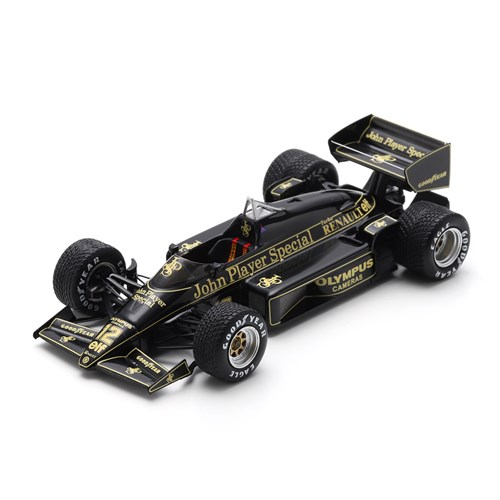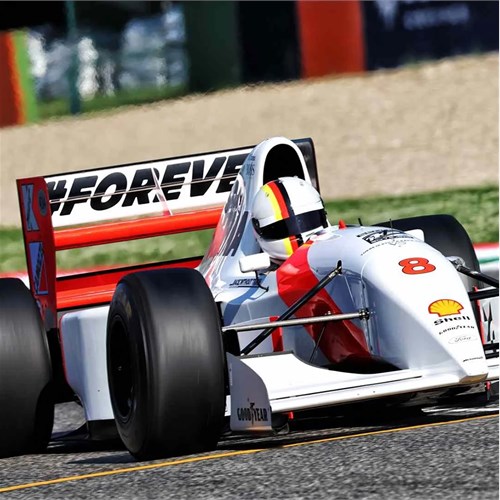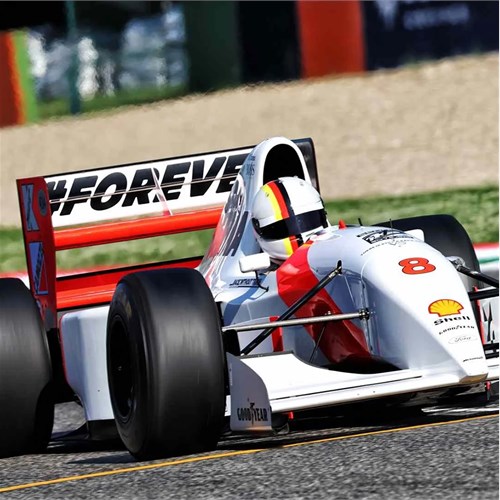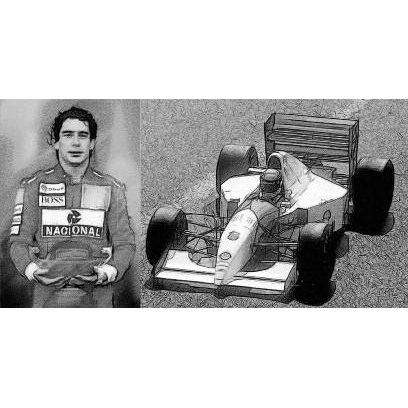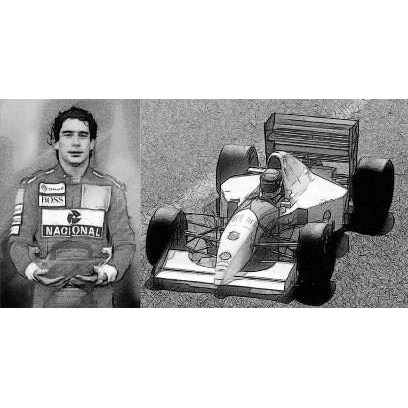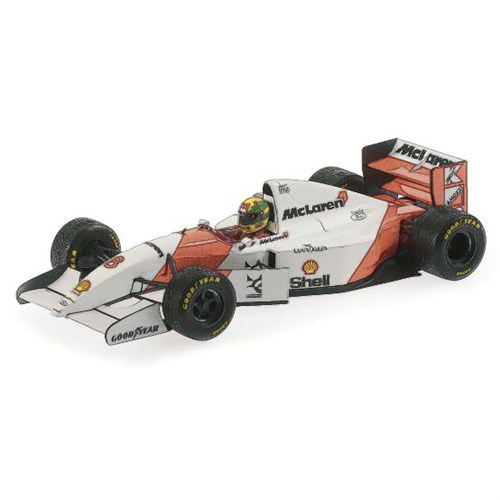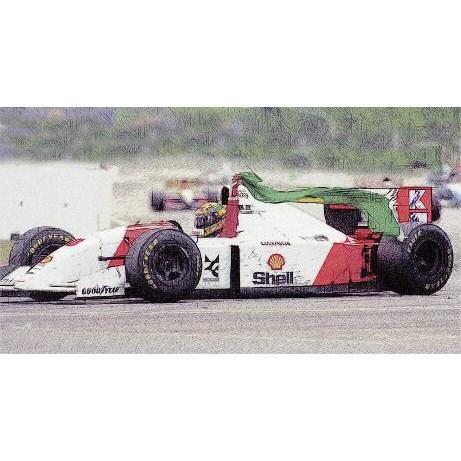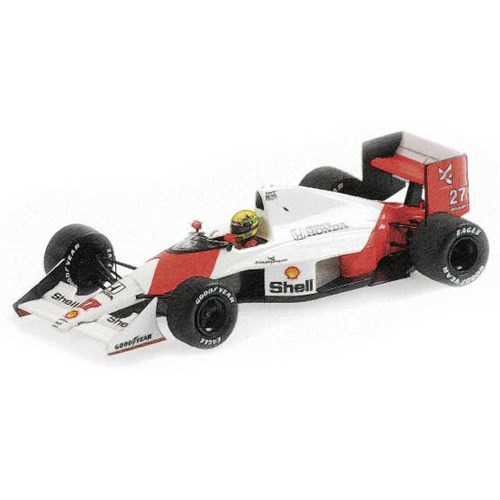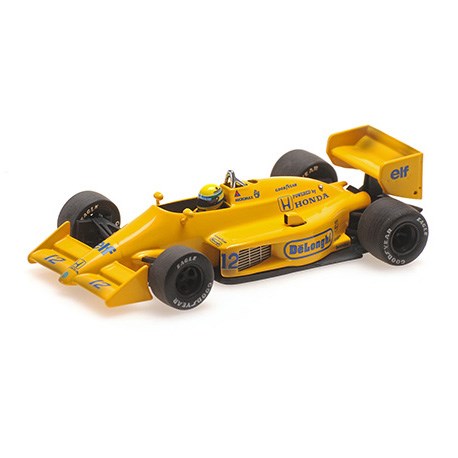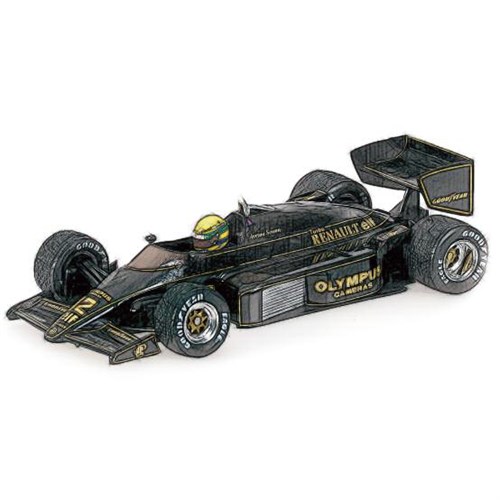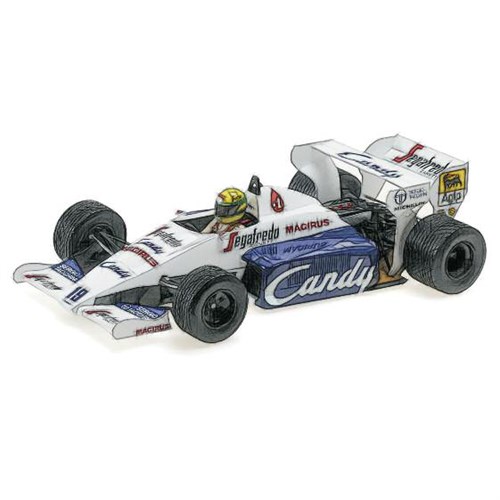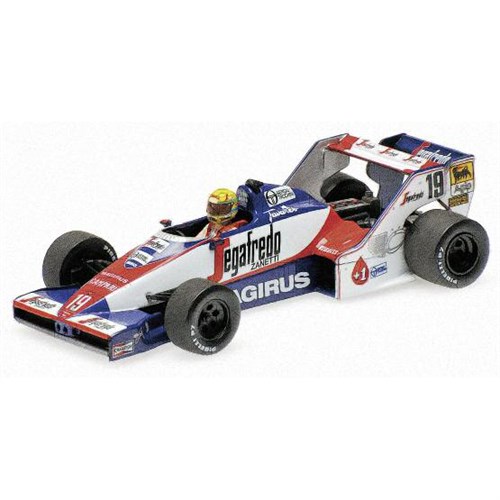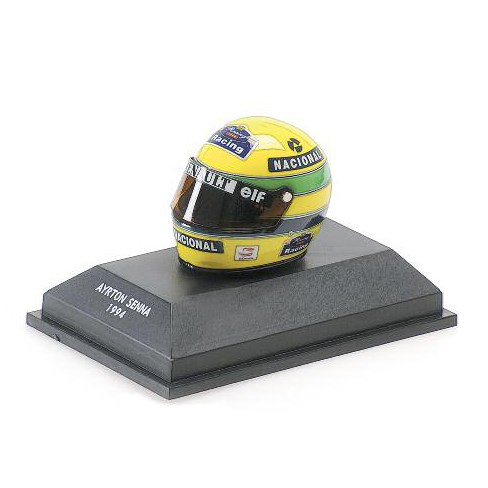- Menu
- Diecast brandsFeatured brandsAll diecast brands A - L
- F1 models
- Road carsSearch by marque A-JSearch by marque L-ZSearch by scale
- Motorsport modelsSearch by motorsportSearch by scale
- Motorbike modelsSearch by motorbike typeValentino Rossi
- Other models
- Models by Scale
- SaleSearch by product typeSearch by scale
- Stories
- Sign In
- Register
Ayrton Senna F1 model cars | Ayrton Senna Formula One models
Buy Ayrton Senna F1 model cars from the UK’s largest stockist of resin and diecast models. Huge selection of 1:18 and 1:43 Ayrton Senna model cars including subjects manufactured by Minichamps, Spark and more.
Our Ayrton Senna model car and helmet collection pays tribute to one of the most naturally talented drivers to have ever got behind the wheel of a racing car. Each replica — from precision-engineered diecast model cars to finely detailed model helmets — celebrates Senna’s unforgettable achievements with McLaren, Lotus, and beyond.
The Brazilian came to Great Britian to embark on his single-seater career, winning the national Formula Ford 1600 championship in 1981 before moving up to Formula Ford 2000 in 1982. He claimed both the British and European titles in that category. The final rung on the ladder below Formula One was British Formula 3, Senna securing that accolade in 1983 after a season-long scrap with Martin Brundle. He also won the prestigious Macau F3 Grand Prix at the end of the year.
Senna joined the Toleman team to make his Formula One debut in 1984. The mercurial youngster made an immediate impression, finishing in the points in just his second race in what was far from the most competitive car on the grid. At Monaco he gave a sneak preview of his stunning ability in wet conditions, finishing second in atrocious weather. He scored another couple of rostrum finishes before the end of the year before moving on to pastures new with Lotus in 1985.
The 1985 Portuguese Grand Prix would become one of the most significant events in Formula One history, as it was the scene of Senna’s first Formula One win, in just his second race for his new team. Again, the weather conditions were appalling. Senna’s yellow helmet at the wheel of a black and gold John Player Special-sponsored Lotus would become one of the most iconic images in history of the sport, especially with sparks flying out behind it. Ayrton claimed a second win before the end of the 1985 world championship, and would also score two more victories in each of the 1986 and 1987 seasons. In the latter campaign Lotus changed sponsor to Camel, and so now the colour of Senna’s car matched his helmet. The Brazilian would also score the first of his six victories at the Monaco Grand Prix, a record that remains unbeaten to this day.
In 1988 Senna moved to McLaren, and for the first time he had a car that was truly capable of challenging for the world championship. Teamed with Alain Prost, and powered by Honda’s potent turbo engine, the team won 15 of the year’s 16 races. Crucially Senna took eight wins compared to Prost’s seven, and secured the first of his three world titles.
In 1989 the relationship between Senna and Prost broke down, with a collision between the team-mates at the Japanese Grand Prix deciding the championship in the Frenchman’s favour. Prost left McLaren for Ferrari in 1990, but the two drivers continued to fight acrimoniously for the title and it was again decided by a crash at Suzuka; this time Senna prevailing.
In 1991 Senna won the first four races of the year to set himself up for his third and final world championship, resisting a challenge from Williams’ Nigel Mansell from the middle of the season.
1992 and 1993 saw Senna and McLaren forced to play second fiddle to a dominant Williams team, Mansell and Prost taking home the drivers’ championship respectively in those two seasons. Senna’s outstanding talent still shone through though, particularly on days when the weather conditions were adverse. In the 1993 European Grand Prix at Donington Park the Brazilian performed what has become known as the ‘Lap of the Gods’, when he stormed from fifth to the lead on the opening lap of the race.
Senna joined Williams for the 1994 season, and it was expected that the Brazilian would enjoy a dominant campaign. Alas, it was not to be. After retiring from the first two races Ayrton suffered a fatal accident on the sixth lap of the San Marino Grand Prix at Imola. He was leading at the time. Formula One was rocked to its core, and the sport briskly initiated a series of safety initiatives.
Ayrton Senna was widely regarded as the fastest driver Formula One has ever seen, and certainly over one lap. At the time of his death he had a record 65 pole positions, and still sits third in the all-time list today. He also amassed 41 grand prix victories and 19 fastest laps over the course of his F1 career.
read more
Loading more products ...







